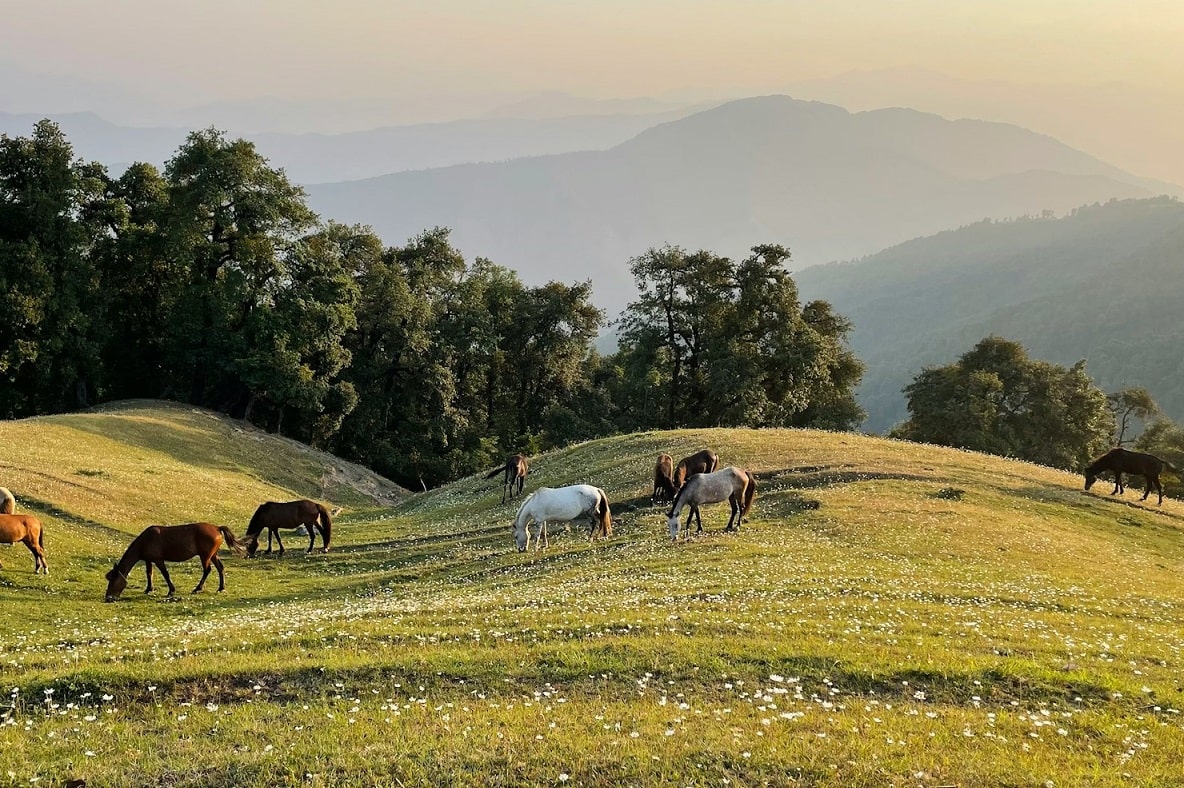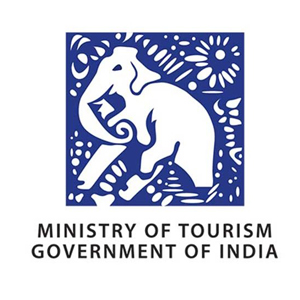The Nag Tibba trek is a popular trekking route in the Indian state of Uttarakhand, known for its accessibility and stunning views of the Himalayas. The trek typically starts from the village of Pantwari and ascends to the Nag Tibba summit, which stands at an altitude of approximately 3,022 meters (9,915 feet). Along the way, trekkers traverse through dense forests filled with oak and rhododendron trees, pass by charming villages, and enjoy panoramic vistas of snow-capped peaks including Swargarohini, Bandarpoonch, and Gangotri. The Nag Tibba trek is suitable for beginners and can be completed in a couple of days, making it a popular choice for both novice and experienced trekkers looking for a scenic adventure in the Himalayas. Explore more – Places to visit in Uttarakhand.
Nag Tibba Trek Distance
The Nag Tibba trek is approximately a 15-20 kilometers round trip, depending on the starting point and specific route taken. The trek typically begins from the village of Pantwari, which is located near Dehradun in the state of Uttarakhand, India. From Pantwari, trekkers ascend to the Nag Tibba summit, which stands at an altitude of around 3,022 meters (9,915 feet) above sea level. The distance covered during the trek can vary slightly based on factors such as the exact starting point, any detours taken, and individual hiking pace. Overall, it’s a moderate trek that can usually be completed within 2-3 days, making it accessible to a wide range of trekkers.
Nag Tibba Base Camp
The base camp for the Nag Tibba trek is typically located in the village of Pantwari, which serves as the starting point for the trek. Pantwari is a small village situated near Dehradun in the state of Uttarakhand, India. Trekkers usually gather at Pantwari before beginning their ascent to the Nag Tibba summit. From Pantwari, the trek follows a well-defined trail that winds its way through dense forests, pastures, and ridges, eventually leading to the summit of Nag Tibba. Along the route, there are also options for camping at designated spots, providing opportunities for trekkers to rest and enjoy the natural surroundings before continuing their journey to the summit. Pantwari serves as a convenient and comfortable base camp for trekkers embarking on the Nag Tibba trek, offering basic amenities and accommodation options for overnight stays before and after the trek.
Nag Tibba Height
Nag Tibba Night
Spending a night at Nag Tibba can be an incredible experience for trekkers, offering the opportunity to witness breathtaking views of the starlit sky and surrounding mountains. Many trekkers choose to camp overnight at or near the summit of Nag Tibba to fully immerse themselves in the natural beauty of the Himalayan landscape. Camping under the stars allows for a peaceful and serene experience, with the quietude of the mountains enveloping you as you rest after a day of trekking. The crisp mountain air, the flickering of campfires, and the distant sounds of nature all contribute to a memorable and rejuvenating night spent in the Himalayas. Additionally, camping at Nag Tibba allows trekkers to wake up to stunning sunrise views over the snow-capped peaks, creating lasting memories of their Himalayan adventure.
Best Time for Nag Tibba Trek
The best time to undertake the Nag Tibba trek is generally during the months of March to June and September to November.
- Spring (March to June): During this time, the weather is pleasant with clear skies, making it ideal for trekking. The surrounding forests are lush and green, and the wildflowers are in bloom, enhancing the scenic beauty of the trekking route.
- Autumn (September to November): This period offers similar weather conditions to spring, with mild temperatures and clear skies. The post-monsoon months bring fresh greenery to the landscape, and the views of the surrounding mountains are often at their best.
Both spring and autumn are considered the peak trekking seasons for Nag Tibba due to the favorable weather conditions and excellent visibility. However, it’s essential to check weather forecasts and trail conditions before planning your trek, as weather patterns can vary, and unexpected rainfall or snowfall may occur even during these seasons. Additionally, the summer months (June to August) should be approached with caution due to the possibility of heavy rainfall and slippery trails, while winter (December to February) can be cold and challenging, especially at higher altitudes.
Camping in Nag Tibba
Camping in Nag Tibba is a popular activity for trekkers looking to immerse themselves in the natural beauty of the Himalayas. There are several camping options available along the trekking route, allowing visitors to spend a night under the starlit sky amidst the tranquil surroundings of the mountains.
Most trekkers choose to camp near the summit of Nag Tibba to enjoy panoramic views of the surrounding peaks and valleys. There are designated camping spots with flat terrain, suitable for pitching tents and setting up campfires. Trekkers can bring their own camping equipment or opt for organized trekking tours that provide tents, sleeping bags, and other necessary gear.
Camping at Nag Tibba offers a unique experience of being close to nature, with the opportunity to witness stunning sunsets and sunrises, stargaze at night, and listen to the sounds of the wilderness. It’s essential to practice responsible camping by following Leave No Trace principles, respecting the environment, and ensuring proper waste disposal.
Before embarking on a camping trip to Nag Tibba, trekkers should check weather forecasts, trail conditions, and any necessary permits or regulations. Additionally, it’s advisable to be well-prepared with appropriate clothing, camping gear, food, and water to ensure a safe and enjoyable experience in the mountains.











